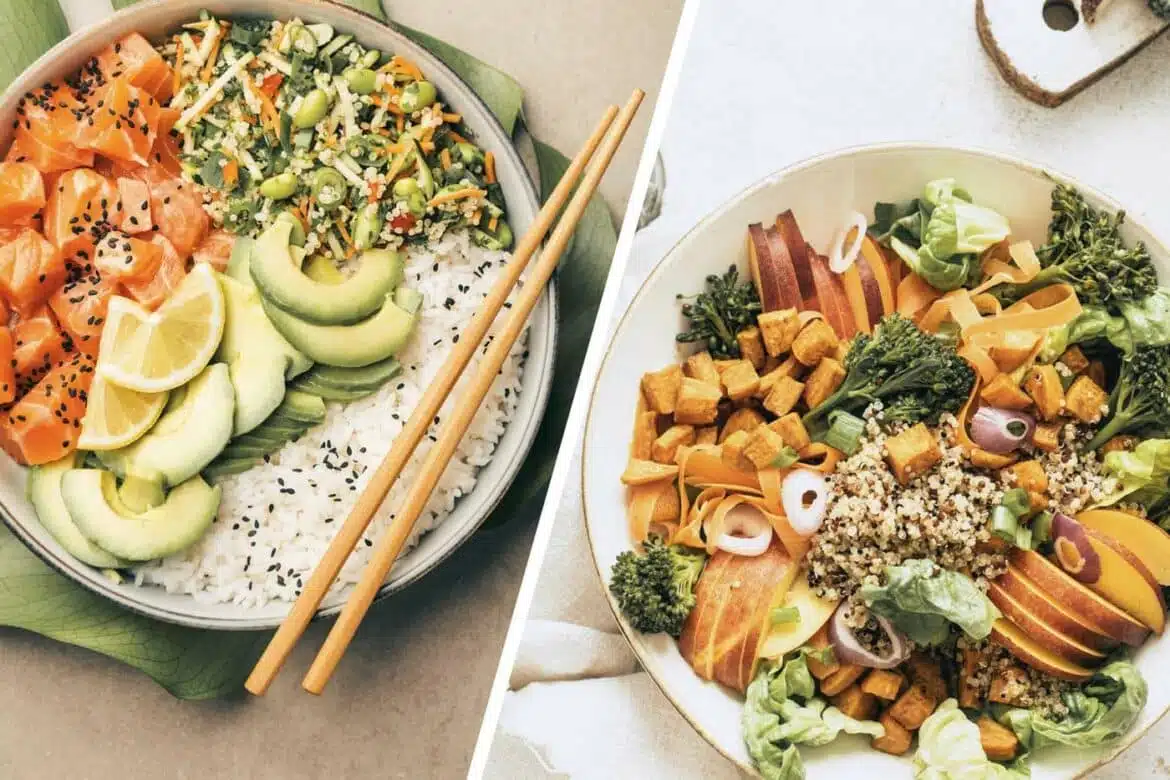This post is also available in: ![]() Deutsch
Deutsch ![]() Français
Français
Are you #teampoke or #teambuddha? Think they’re the same thing? Then think again! While one is a healthy one-bowl meal inspired by a Buddhist tradition, the other is a marketing salad with dubious eco-friendly credentials. Here’s everything you need to know about these two popular dishes.
It’s Sunday evening and you don’t feel much like cooking. You reach for your phone and browse the food delivery apps. Dinner can come to you today! You’re tempted by a burger… But, no, it’s almost summer and you’ve got your bikini body to think about! So, you’ll be good and you’ll get a poke bowl instead. A nice healthy dinner. We hate to be the bearer of bad news, but… it isn’t. It may look fresh and healthy, but the colourful Hawaiian poke bowl is anything but.
“People often think that healthy meals are also low in calories, but that’s not necessarily the case. A healthy meal may be packed with a variety of nutritious foods, but that doesn’t necessarily make it low-calorie,” explains nutritionist Virginie Di Tore. “Some of my patients come to me because they can’t understand why they’re putting on weight when all they’re having for lunch is a poke bowl. A poke bowl can easily contain 1,000 calories per serving – that’s half an adult’s recommended daily intake in one meal alone! And before they know it, they’ve exceeded their calorie limit for the day!”
Poke bowls, which contain white rice, fruit, vegetables and some protein, are, in fact, a sugar and fat bomb: The extra-white rice has a very high glycaemic index; avocado, tuna and salmon are very high in fat… Add to that salty pickles, a peanut butter or tahini-based sauce… When you look more closely, it’s easy to see just why poke bowls are far from good for the waistline.
Foods like avocado and mango that have often crossed the Atlantic to reach your plate and farmed salmon full of antibiotics make poke bowls an even more controversial dish. Not, therefore, quite as eco-friendly as you may first think.
Buddha bowls: the local, healthier alternative
Buddha bowls boast a mix of raw and cooked grains, pulses and vegetables, inspired by the vegetarian diet of Buddhist monks. They’re usually made with quinoa and seasonal raw vegetables. Hummus is a popular accompaniment. “They’re a better choice: Quinoa is lower in carbohydrates and has a low glycaemic index, and hummus is a great source of carbohydrates, protein and fibre. They’re a fantastic meal from a nutritional point of view,” says Virginie Di Tore.
Poke bowls: homemade is better
If you still fancy a poke bowl every now and then, simply make your own. This will enable you to control exactly how much of what goes in it. Instead of short-grain white rice, use basmati or whole-grain rice. Make sure your poke bowl is well balanced: Both salmon and avocado, for example, are rich in Omega-3 and high in calories. If you want to add avocado to your poke bowl, replace the salmon with prawns, which score low on fat. If you want to add seeds and nuts, then no more than 5 or 6. If you want to add a little tartness, pop in a quarter of a Granny Smith apple. And instead of drowning your poke bowl in sauce, play around with some spices: paprika, chilli, curry… for a guaranteed delicious dish! “One last tip: Season your poke bowl with cider vinegar – this will lower the glycaemic index. Mix in some soy sauce… And ta-da! A tasty poke bowl that doesn’t blow your calorie budget!” says Virginie Di Tore.


